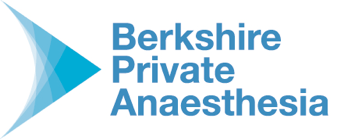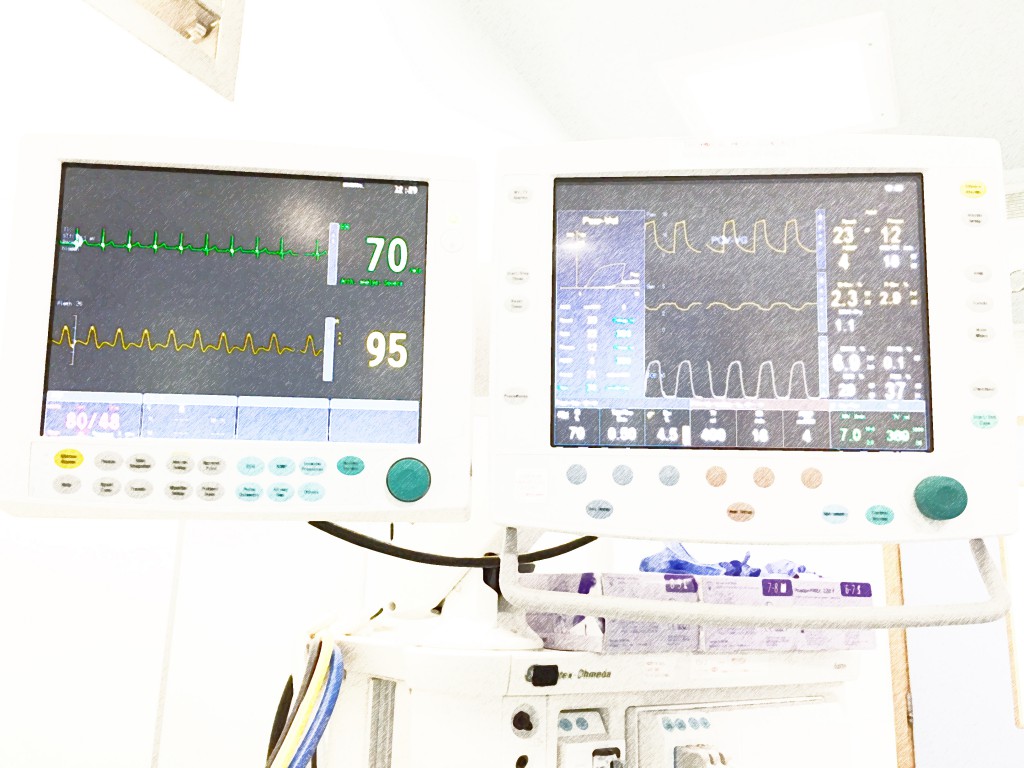
Home
Our Consultants
Your Anaesthetic
Our Tariffs
Get in Touch


Depending on your medical history and the proposed operation, you may need to attend a pre-operative assessment clinic run by a specialist nurse. At this visit you will be asked questions regarding your general health. You should bring your current medications (or a list of them) with you. The assessment may involve listening to your heart and lungs with a stethoscope, performing some simple investigations such as a heart tracing (electrocardiogram or ‘ECG’) or blood tests. If any significant problems are identified this information will be forwarded to your anaesthetist. The purpose of this clinic assessment is to ensure that we tailor the anaesthetic to your individual needs. A thorough assessment can help to avoid any unnecessary cancellations on the day of surgery. This is also a good time to ask any questions you have about the anaesthetic. If you would like more information please contact the BPA office by phone or email.
Your anaesthetist will come to see you prior to the operation and go through the pre-operative assessment questionnaire with you. They may need to listen to your heart and lungs with a stethoscope. Your anaesthetist will discuss the type of anaesthetic best suited for your operation and what to expect when you reach the anaesthetic room. This is the ideal moment to discuss any questions or concerns you have which were not covered during your pre-assessment appointment. Very occasionally your operation may need to be postponed if your medical condition on the day means that it would not be safe to proceed.
After being accompanied to the anaesthetic room by a ward nurse, you will be met by your anaesthetist and their assistant. After a check-in procedure, you will have monitoring applied to you. This will include heart monitoring (ECG stickers on the your chest), oxygen level monitoring (a plastic finger clip) and a blood pressure cuff on your upper arm. You will also need a ‘drip’ or cannula (plastic tube inserted into a vein, often on the back of your hand) before your anaesthetic starts. Insertion of the cannula might be very slightly uncomfortable. If you are particularly concerned about this please let your anaesthetist know beforehand as it will normally be possible to put some local anaesthetic gel on the skin to minimise any discomfort.
Occasionally it may be necessary to place extra monitoring. If this is the case you anaesthetist will have discussed this with you in the pre-operative visit.
If you are having a local anaesthetic block, then this is the place where the anaesthetist will perform the injection for you.
If you are having an operation you will need some form of anaesthetic. Some patients will be unconscious (general anaesthetic), while others stay awake and are kept pain free with a local anaesthetic injection. The term used to describe numbing a region of your body is commonly called a regional block.
Depending on the surgery you are having, the anaesthetist may need to numb a relatively small part of your body (simple local anaesthetic injection) or a wider area (e.g. a spinal block).
A general anaesthetic is a drug that makes you temporarily unconscious. In adults this is usually given by an injection through a cannula into a vein. This is followed by the administration of other dugs that will keep you unconscious and safe. The initial injection may be uncomfortable for a few seconds. After you are asleep you will then be moved into theatre. The anaesthetist stays with you throughout the whole operation, monitoring you very closely, keeping you safe and tailoring the anaesthetic to your individual requirements. At the end of surgery the anaesthetist will wake you up safely.
After the operation you will be cared for in a recovery area where experienced recovery staff will look after you. They will help to ensure you are comfortable and not feeling sick. You will routinely be given oxygen through a facemask.
Anaesthetic drugs disappear rapidly from your body so will have minimal effect on your recovery. However you are advised to take things easy for the first 24 hours after an anaesthetic and you should be accompanied by a responsible adult during this time. You should not return to work, operate machinery or drink alcohol for 24 hours after an anaesthetic. You must not drive a car for 36 hours after an anaesthetic. If you have had a regional block you will be given special instructions on the day of surgery.
All BPA anaesthetists are consultant anaesthetists. A consultant is the highest grade of doctor. All anaesthetists are qualified doctors and have undertaken long periods of training and passed Royal College examinations in an identical fashion to physicians and surgeons. The BPA anaesthetists work together in a registered partnership to ensure they are able to cover all surgical specialities in the Reading area, 24 hours a day and 365 days a year. Information about all the BPA partners is listed on the ‘Our Consultants’ page. We are recognised by all major UK insurance companies.
This will be explained to you by the nurse in the pre-operative assessment clinic. In general, you should continue to take your normal medications up to and including on the day of surgery. Exceptions include blood thinning drugs (such as warfarin, clopidogrel or aspirin) and some diabetic medications where you will need to carefully follow the instructions given to you by the nurse or doctor.
If you feel unwell when you are due to come into hospital for your operation, the hospital will need to know. Depending on the illness and how urgent the surgery is, the operation may need to be postponed until you are better.
This will be explained to you at the pre-operative assessment clinic. As a general rule you should not eat for six hours before anaesthesia. Clear fluids (tea or coffee without milk, fruit squash, water, but not milk, fruit juice or fizzy drinks) may be drunk until two hours before anaesthesia. For safety reasons it is important that your stomach is empty before you are anaesthetised. Of note, occasionally these fasting periods may be extended in order to allow flexibility in operating lists.
Having an operation and an anaesthetic always carries a risk of some kind; your anaesthetist will discuss those that are relevant and significant to you. Risks are primarily determined by your own medical history and general health (hence the importance of pre-assessment) and the type and complexity of surgery. More information about risks of anaesthesia can be found on the Royal College of Anaesthetists website.
Yes, they are very safe. The risk of serious complications, such as feeling the operation, allergy, worsening of an underlying medical condition or death, for a healthy patient is very small indeed. All anaesthetic consultants are trained to treat complications if they occur. The most common complications following a general anaesthetic include a dry or sore throat, nausea and light-headedness. These usually settle within 24 hours. The nausea may be due to the anaesthesia or the surgery itself.
Some people worry particularly about spinal and epidural anaesthetics. These are also very safe. The most common side effect is failure for the block to work completely. This occurs in about 1 in 100 spinals, 1 in 20 epidurals and 1 in 10 -20 arm or leg blocks. If this happens the consultant anaesthetist will ensure that you are comfortable by other means. Fewer than 1 in 100 people get a bad headache after an epidural or spinal anaesthetic. The risk of permanent nerve injury is very low indeed. The largest ever study into the major complications of epidurals and spinals (www.rcoa.ac.uk/nap3) concluded that the estimated risk of permanent harm is less that 1 in 20,000. Please refer to patient information leaflets on the Royal College of Anaesthetists website for further information on anaesthetic risk associated with regional techniques.
This will vary according to your individual medical background and the type of operation you are having. Please discuss your travel plans with your surgeon before booking any flights.
The time between anaesthetics is rarely a limiting factor in planning surgery. It is more likely that your surgeon will want you to have fully recovered from one operation before embarking on another one. It is therefore sensible to discuss timing of repeat surgery with your surgeons.
The principles of anaesthesia are the same for adults and children. The main differences that it may be useful to be aware of include:
A child is usually accompanied to the anaesthetic room by one parent, as well as the ward nurse. The role of the parent is to provide support for their child. The anaesthetist will have explained what to expect in the anaesthetic room at their pre-operative visit. This will vary depending on the age and maturity of the child. For younger children (e.g. aged under four or five years), you may be asked to hold your child on your lap, whereas older children might lie or sit on a bed. If you think you would find accompanying your child in the anaesthetic room very distressing then please let the anaesthetist know at the pre-operative visit. Of note, it is perfectly ok for a child to bring a favourite cuddly toy with them if they would like.
Children may be anaesthetised with an injection or by breathing through a soft, cushioned mask. If an injection is to be used, local anaesthetic cream will be applied before coming to theatre. This takes about 30 minutes to be fully effective. It may cause some reddening or blanching of the underlying skin, but this will quickly wear off once the cream is removed. It important to be aware that as children are anaesthetised they often wriggle. They will not remember this. You may be asked to keep a firm hold by the Consultant Anaesthetist as they pass through this phase of the anaesthetic.
You will usually be able to stay with your child until they have gone off to sleep, at which point the ward nurse will escort you back to the ward. The Consultant Anaesthetist has your child’s safety as their primary concern at all times. In emergencies and in some other situations, you may not be able to stay until your child is fully anaesthetised and will be asked to leave. It is important that when you accompany a child to the anaesthetic room that you do exactly what the Consultant Anaesthetist says and that you leave when asked.
After the operation your child will go to recovery and be looked after by a specialist nurse. You will be called to see your child as soon as possible after they wake up. Children can often be disorientated for a short while after a general anaesthetic which can be distressing for them. Your calm presence in the recovery area is helpful to minimise this.
For more information on children’s anaesthesia, please refer to the ‘Information for Children and Parents’ on the Royal College of Anaesthetists website. The embedded videos may be particularly useful.
